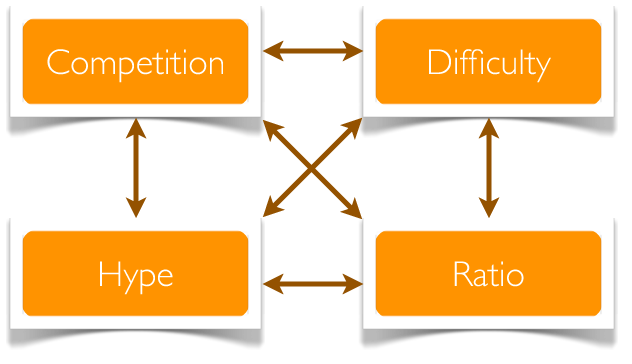 It’s been some time since I’ve turned my back to most paid projects for others.
It’s been some time since I’ve turned my back to most paid projects for others.
Why? Simple mathematics…
It’s all based on a simple equation:
X Time = Y Money
Need more Money? Then you have to spend more time!
It’s simple and sad. Sad that it took me years to understand that this business model is not good, at least not for me.
There was a time that I pushed myself to the limit just to be able to undertake more projects. Projects need more people and that means greater expenses… It’s a vicious circle that can only end if and only if you are able to position yourself at the top companies in your niche or by deciding to stop wasting your life in the process and get over it.
I did the second.
When my team and I withdrew from taking any more projects and decided that we will only do in-house work, many people came to us with ideas.
(By the way I don’t know what’s wrong but 90% of them is about a Social Network for something. That really drove me mad. It’s like people have no imagination and try to copycat the big players in a small niche. What really pushed me into the edge was that all those people came with the “idea” and we had to implement it. Thank you but I know how to take the “Social Network…” for and then add a word from the vocabulary, I don’t need your help! Enough with me letting off steam.)
After some time, I came with a method that helps me to differentiate the bad from the good projects.
The system is a 4 step check.
The main things I take into consideration are:

Competition
Step 1. Conventional Methods
First of all when I think of an idea, I check Google. I am looking for all the related keywords I can think of and try to spot the main ones for this idea. Then I check the competition. I open the first 10 sites and check their PageRank, Alexa Rank and Domain Age.
It might seem a hollow test but it is a very good first indication if:
This market has many competitors (Even without the competitive advantages that we can thing of)
There’s a chance that the competition (at least in the organic results) is hard. If most of the top 10 have a site with PageRank 6 or something like that, I can instantly know that this idea is a pain to promote.
After that I am going to AdWords Keyword Tool to check for traffic. I input all the keywords that I have, and check what are the most dominant in that niche. Together with that, I can easily see the competition.
Last but not least I check the age of the domains, most of the times with dnscoop. It’s a bit slow lately but it’s kinda cool. I am still wondering why I am not making my own…. With this check I am able to understand if a new player can come to this market and reserve a spot in the top results easy. It’s a very good indication of how easy it is to penetrate a market.
Step 2. Social Media
After my previous search, twitter is my next step, helping me to search for two things; The sites I checked before and the category as a whole. I am looking for people’s expectations on that niche and I can easily spot new startups in that field.
Hype
While on twitter I am looking for patterns indicating that this niche is a very new one or a saturated one. Knowing already the main keywords by now using google and the AdWords Keyword Tool, I can see if many people still talk about that category.
Then I head Straight to Google’s Trends, and check what they have to say about my keywords too.
Difficulty
After the first two steps, now comes the time for a meeting. I meet my programmer and I am trying to sales pitch the idea to him. If he’s sold in the first two minutes then the project starts looking very good to me too. (He might be a programmer (nothing wrong with programmers seriously) but he also has a very good business background too; he can find advantages for an idea very well and he’s the most talented devil’s advocate I’ve met.
If he likes the idea, then we put on paper everything we’d love to see as a feature and everything is divided into two parts. Features that are essential for the release and others that will be needed on a later stage.
It really hurts when we’re into an idea and we finally find out that the resources needed for the features we need in order to get a competitive advantage or to make a very good service site are way too high. Sometimes we’re even abandoning projects that either need many people to be created or a lot of starting capital.
Ratio
Last but not least, comes the “Ratio” part.
We’re trying to estimate how much time all features and the back-end will take to be completed and come up with the number of hours for the release and for the extra features. The next step is of course the business model. Trying to find what the monetization funnels are for this particular project, together with the expected growth it will have according to the competition, hype and the features is a very crucial part. Having an estimated revenue for the first three, six and twelve months of the project’s life, makes it easy for us to decide if this project is “Viable”, meaning if it will be able to pay the “costs” in terms of time we will devote to it.
If everything goes well up to that point, we meet with the rest of the people who will be involved or the team that came to us with the idea and start talking about boring percentages.
Mission Accomplished!
Don’t get me wrong I am not trying to make your life harder by putting you in a lot of work before even starting a project, but some hours of planning can save a lot of wasted time in the long run.
Ps. What system or steps do you follow in order to evaluate a project and decide if it’s worth your time and effort? Really want your thoughts on this one.
Angel.


